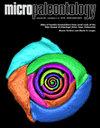Foraminifera of the Eocene Shitakara Formation in eastern Hokkaido, with the designation of neotype specimens of Yoshida (1957)
IF 1.3
4区 地球科学
Q3 PALEONTOLOGY
引用次数: 0
Abstract
Forty-three species belonging to thirty-seven genera of benthic foraminifera were differentiated from the Eocene Shitakara Formation in the eastern part of the Kushiro Coalfield, eastern Hokkaido. The foraminiferal assemblages show upward transgression from the inner to outer sublittoral condition. They contain abundant agglutinated and calcareous hyaline benthic species, including Labrospira crassiformis, Haplophragmoides subamakusaensis, and Cribroelphidium sorachiense, indicating similarity to the Eocene fauna in central Hokkaido. Two planktonic species Chiloguembelina ototara and Tenuitella insolita also indicate a late Eocene age. Neotype specimens of Cyclammina pacifica var. kushiroensis, Nonion kushiroense, and Nonion sorachiense var. konbumoriense described by Yoshida (1957) have been designated as replacements for holotype specimens that were lost in a fire in May 1965. A taxonomical reexamination based on the neotypes and topotypes indicates that Cyclammina pacifica var. kushiroensis is a distinct species, whereas Nonion kushiroense and Nonion sorachiense var. konbumoriense are junior synonyms of Cribroelphidium sorachiense (Asano 1954). All foraminiferal taxa are illustrated with taxonomical notes.北海道东部始新世Shitakara组有孔虫,以吉田新型标本命名(1957)
在北海道东部Kushiro煤田东部始新世Shitakara组中鉴定出底栖有孔虫43种,隶属37属。有孔虫组合表现为自下而上向外的海侵。其中含有丰富的凝集和钙质透明底栖动物,包括Labrospira crassiformis、Haplophragmoides subamakusaensis和Cribroelphidium sorachiense,与北海道中部始新世的动物群相似。两个浮游物种Chiloguembelina ototara和Tenuitella solinita也表明始新世晚期。吉田(1957)描述的Cyclammina pacifica var. kushiroensis、Nonion kushiroense和Nonion sorachiense var. konbumoriense的新模式标本已被指定为1965年5月火灾中丢失的全模式标本的替代品。基于新型和拓扑型的分类学研究表明,Cyclammina pacifica var. kushiroensis是一个独立的种,而Nonion kushiroense和Nonion sorachiense var. konbumoriense是Cribroelphidium sorachiense的低级同义种(Asano 1954)。所有有孔虫分类都附有分类注释。
本文章由计算机程序翻译,如有差异,请以英文原文为准。
求助全文
约1分钟内获得全文
求助全文
来源期刊

Micropaleontology
地学-古生物学
CiteScore
3.20
自引率
6.70%
发文量
18
审稿时长
>12 weeks
期刊介绍:
The Journal of Micropalaeontology (JM) is an established international journal covering all aspects of microfossils and their application to both applied studies and basic research. In particular we welcome submissions relating to microfossils and their application to palaeoceanography, palaeoclimatology, palaeobiology, evolution, taxonomy, environmental change and molecular phylogeny. Owned by The Micropalaeontological Society, the scope of the journal is broad, demonstrating the application of microfossils to solving broad geoscience issues.
 求助内容:
求助内容: 应助结果提醒方式:
应助结果提醒方式:


